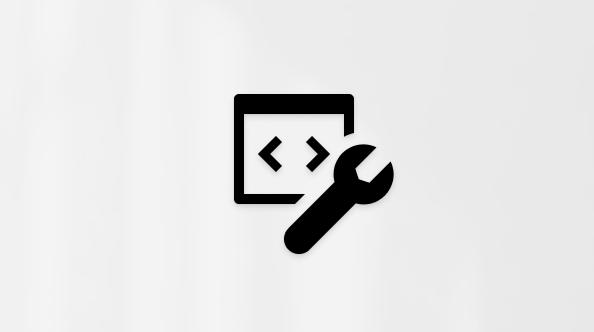May 19, 2025—KB5061768 (OS Builds 19044.5856 and 19045.5856) Out-of-band
Applies To
Release Date:
5/19/2025
Version:
OS Builds 19044.5856 and 19045.5856
Support for Windows 10 has ended on October 14, 2025
After October 14, 2025, Microsoft will no longer provide free software updates from Windows Update, technical assistance, or security fixes for Windows 10. Your PC will still work, but we recommend moving to Windows 11.
For information about Windows update terminology, see the article about the types of Windows updates and the monthly quality update types. For an overview of Windows 10, version 22H2, see its update history page.
Note Follow @WindowsUpdate to find out when new content is published to the Windows release health dashboard.
Important Windows updates do not install Microsoft Store application updates. If you are an enterprise user, see Microsoft Store apps - Configuration Manager. If you are a consumer user, see Get updates for apps and games in Microsoft Store.
Summary
This article lists the security issues and quality improvements included in this update.
Improvements
Applies to: Windows 10 Enterprise LTSC 2021 and Windows 10 IoT Enterprise LTSC 2021
Important: Use EKB KB5003791 to update to Windows 10, version 21H2 on supported editions.
This update includes the improvements that were a part of update KB5058379 (released May 13, 2025). Below is a summary of the key issues that this update addresses when you install this update. If there are new features, it lists them as well. The bold text within the brackets indicates the item or area of the change we are documenting.
-
[OS Security (Known Issue)] Fixed: A known issue on devices with Intel Trusted Execution Technology (TXT) enabled on 10th generation or later Intel vPro processors. On these systems, installing the May 13, 2025, Windows security update (KB5058379) might cause the Local Security Authority Subsystem Service (LSASS) process to terminate unexpectedly, triggering an Automatic Repair prompting for the BitLocker recovery key to continue.
Important: Use EKB KB5015684 to update to Windows 10, version 22H2.
Key changes in this update include:
-
This build includes all the improvements from the supported Windows 10, version 21H2 editions.
-
[OS Security (Known Issue)] Fixed: A known issue on devices with Intel Trusted Execution Technology (TXT) enabled on 10th generation or later Intel vPro processors. On these systems, installing the May 13, 2025, Windows security update (KB5058379) might cause the Local Security Authority Subsystem Service (LSASS) process to terminate unexpectedly, triggering an Automatic Repair prompting for the BitLocker recovery key to continue.
If you installed earlier updates, only the new updates contained in this package will be downloaded and installed on your device.
For more information about security vulnerabilities, please refer to the new Security Update Guide website and the May 2025 Security Updates.
Windows 10 servicing stack update (KB5058526) - 19044.5853 and 19045.5853
Microsoft now combines the latest servicing stack update (SSU) for your operating system with the latest cumulative update (LCU). SSUs improve the reliability of the update process to mitigate potential issues while installing updates.
This update makes quality improvements to the servicing stack, which is the component that installs Windows updates. To learn more about SSUs, see Servicing stack updates and Servicing Stack Updates (SSU): Frequently Asked Questions.
Known issues in this update
Symptoms
There are reports of blurry or unclear CJK (Chinese, Japanese, Korean) text when displayed at 96 DPI (100% scaling) in Chromium-based browsers such as Microsoft Edge and Google Chrome. The March 2025 Preview Update introduced Noto fonts in collaboration with Google, for CJK languages as fallbacks to improve text rendering when websites or apps don’t specify appropriate fonts. The issue is due to limited pixel density at 96 DPI, which can reduce the clarity and alignment of CJK characters. Increasing the display scaling improves clarity by enhancing text rendering.
Workaround
Microsoft has shared its findings on the blurry text issue at 96 DPI, along with potential solutions with Google for further discussion. For additional support, users can report issues related to Noto CJK fonts through the official Google Noto Fonts GitHub repository.
How to get this update
Before you install this update
Based on your installation scenario, choose one of the following:
-
For offline OS image servicing:
If your image does not have the July 25, 2023 (KB5028244) or later LCU, you must install the special standalone October 13, 2023 SSU (KB5031539) before installing this update.
-
For Windows Server Update Services (WSUS) deployment or when installing the standalone package from Microsoft Update Catalog:
If your devices do not have the May 11, 2021 (KB5003173) or later LCU, you must install the special standalone August 10, 2021 SSU (KB5005260) before installing this update.
Install this update
To install this update, use one of the following Windows and Microsoft release channels.
|
Available |
Next Step |
|
|
This update is only available from Microsoft Update Catalog. |
|
Available |
Next Step |
|
|
This update is only available from Microsoft Update Catalog. |
|
Available |
Next Step |
|
|
To get the standalone package for this update, go to the Microsoft Update Catalog website. |
|
Available |
Next Step |
|
|
This update is only available from Microsoft Update Catalog. |
If you want to remove the LCU
To remove the LCU after installing the combined SSU and LCU package, use the DISM/Remove-Package command line option with the LCU package name as the argument. You can find the package name by using this command: DISM /online /get-packages.
Running Windows Update Standalone Installer (wusa.exe) with the /uninstall switch on the combined package will not work because the combined package contains the SSU. You cannot remove the SSU from the system after installation.
File information
A list of the files that are included in this update are provided in a CSV (Comma delimited) (*.csv) file. The file can be opened in a text editor such as Notepad or in Microsoft Excel.













